Bias Keeps Creeping In
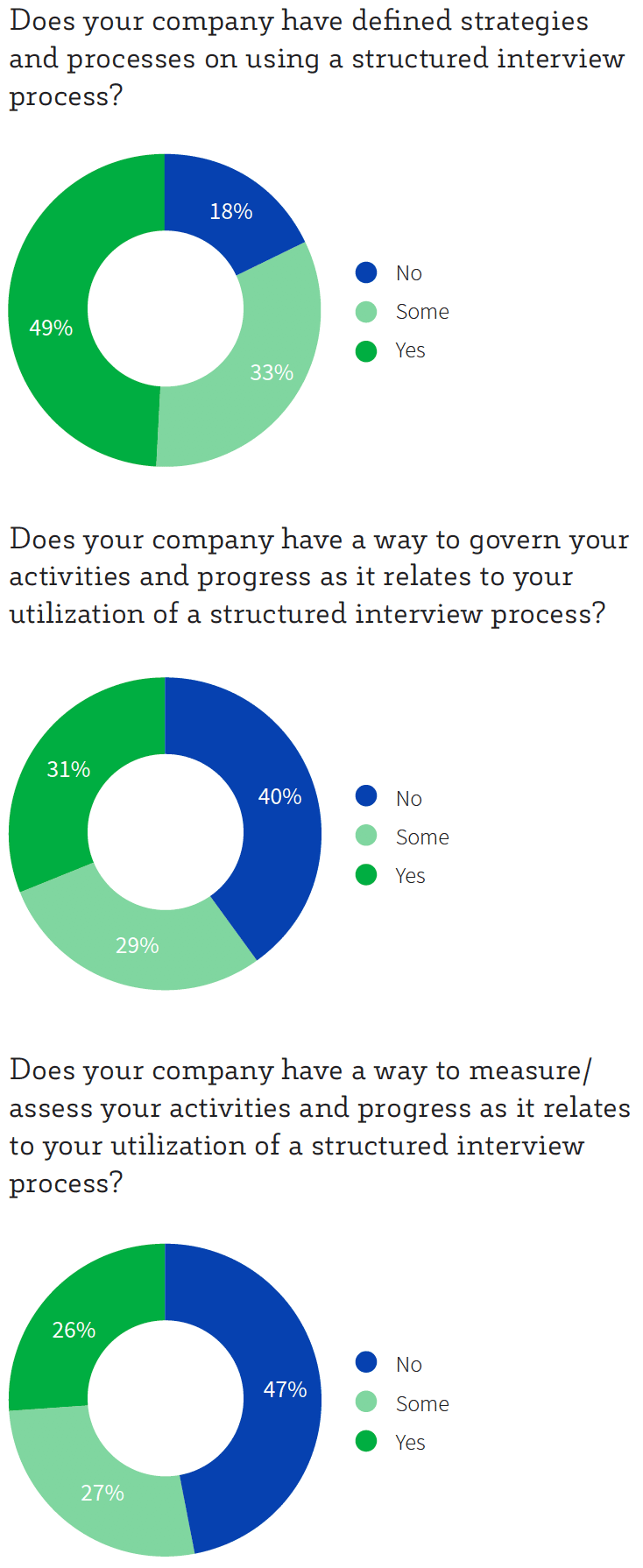
Fair hiring processes add perspective, consistency, and structure to the hiring process, ensuring that all hiring touch points minimize bias. By optimizing the hiring process to focus on relevant, objective criteria from end- to-end, companies can minimize the occurrence of bias during the interview and selection stage.
More companies are adopting standardized interview processes to reduce bias and support fair hiring practices. When interviewers ask the same questions across candidates for a role, it’s much easier to measure everyone by the same yardstick, despite their personal differences. And when you ask questions based exclusively on job-relevant criteria, you minimize opportunities for bias to enter the equation.
Companies have made marked progress on standardized interview processes. Across the board, more than half of participants said their companies have made at least some progress toward developing processes for governing and assessing standardized interviews.
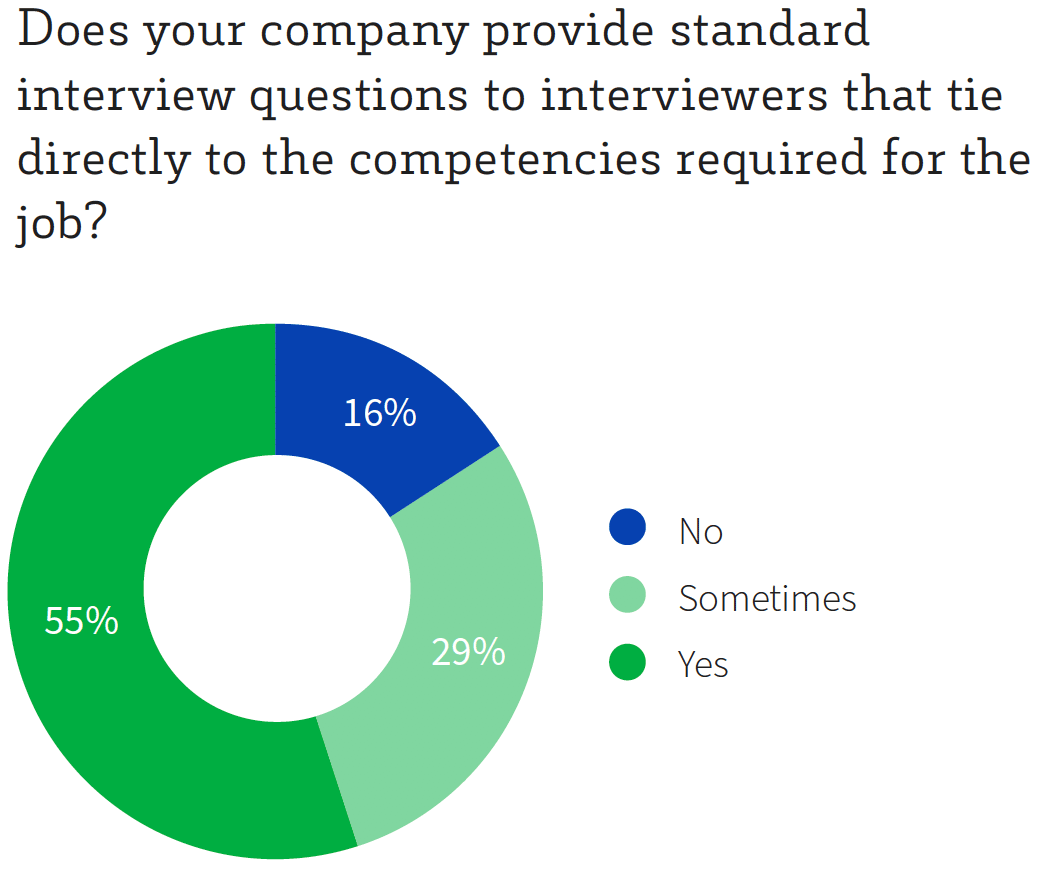
However, many employers have yet to adopt known best practices for minimizing bias in recruitment and promotion. While nearly half of participants said their companies have a process that allows recruiters to review resumes in a bias-free way (by removing names, addresses, and other identifying information), the blind-resume process isn’t carried through when presenting candidates to hiring managers.
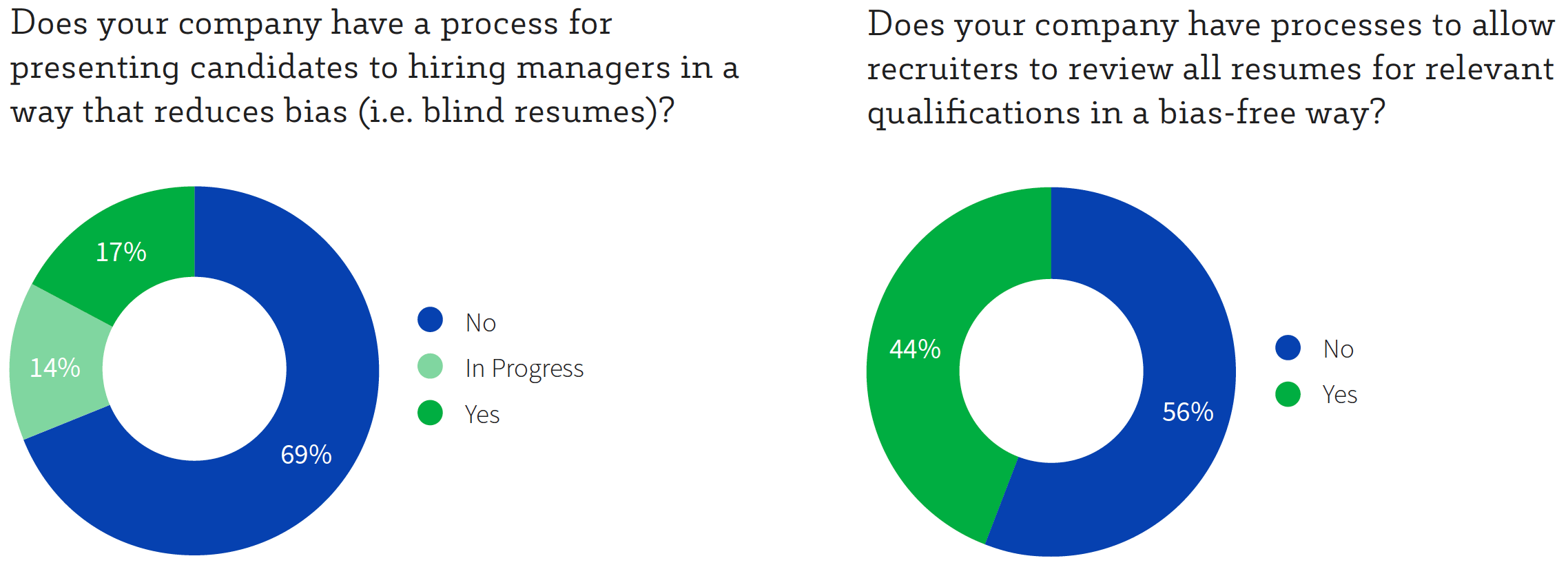

Implementing blind-review processes can go a long way toward reducing bias, but there are still gaps in processes that present even greater opportunities to improve objectivity. Focusing on objective, job-relevant criteria is the best way to circumvent bias. Not everyone has an opportunity to attend a four-year college as a young adult, for example, so basing decisions on legacy expectations (like degree requirements) could be introducing bias against candidates from disadvantaged communities.
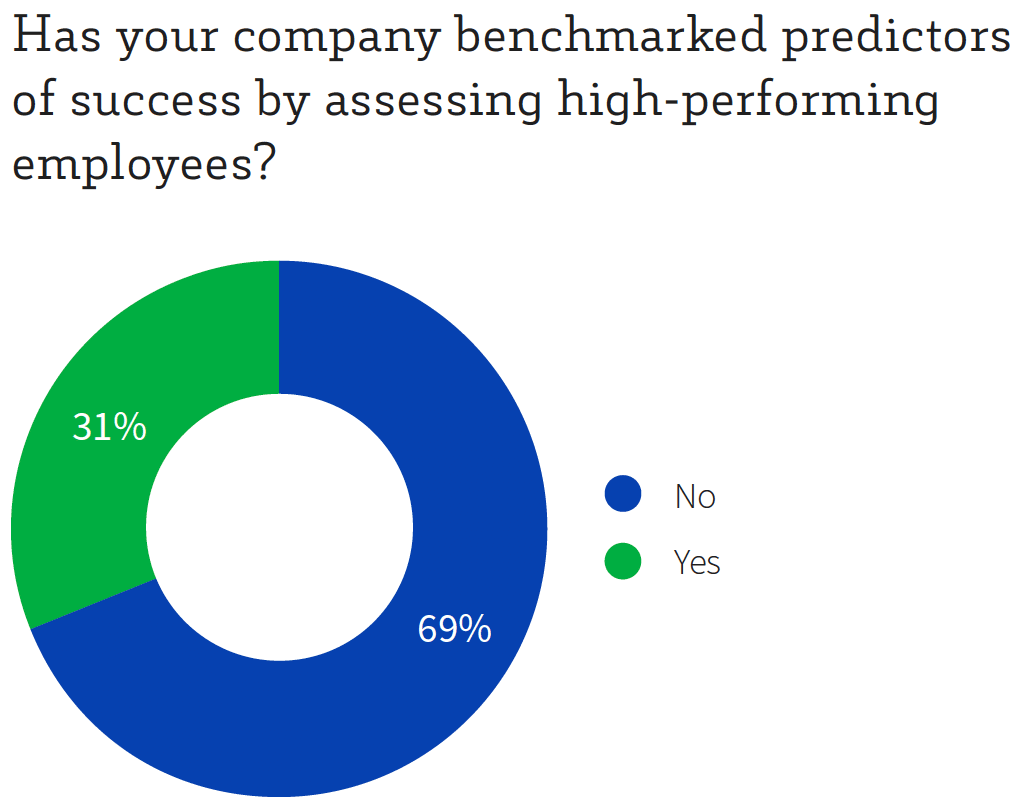
Skills and competencies are better predictors of success than arbitrary requirements. They are also more likely to be found across race, gender, and socioeconomic backgrounds. Becoming clearer about what is actually required for success in the role is a vital step toward minimizing bias in hiring decisions. Yet most participants said their companies haven’t benchmarked predictors of success in the role, and more than half haven’t developed scorecards for each role based on those predictors.
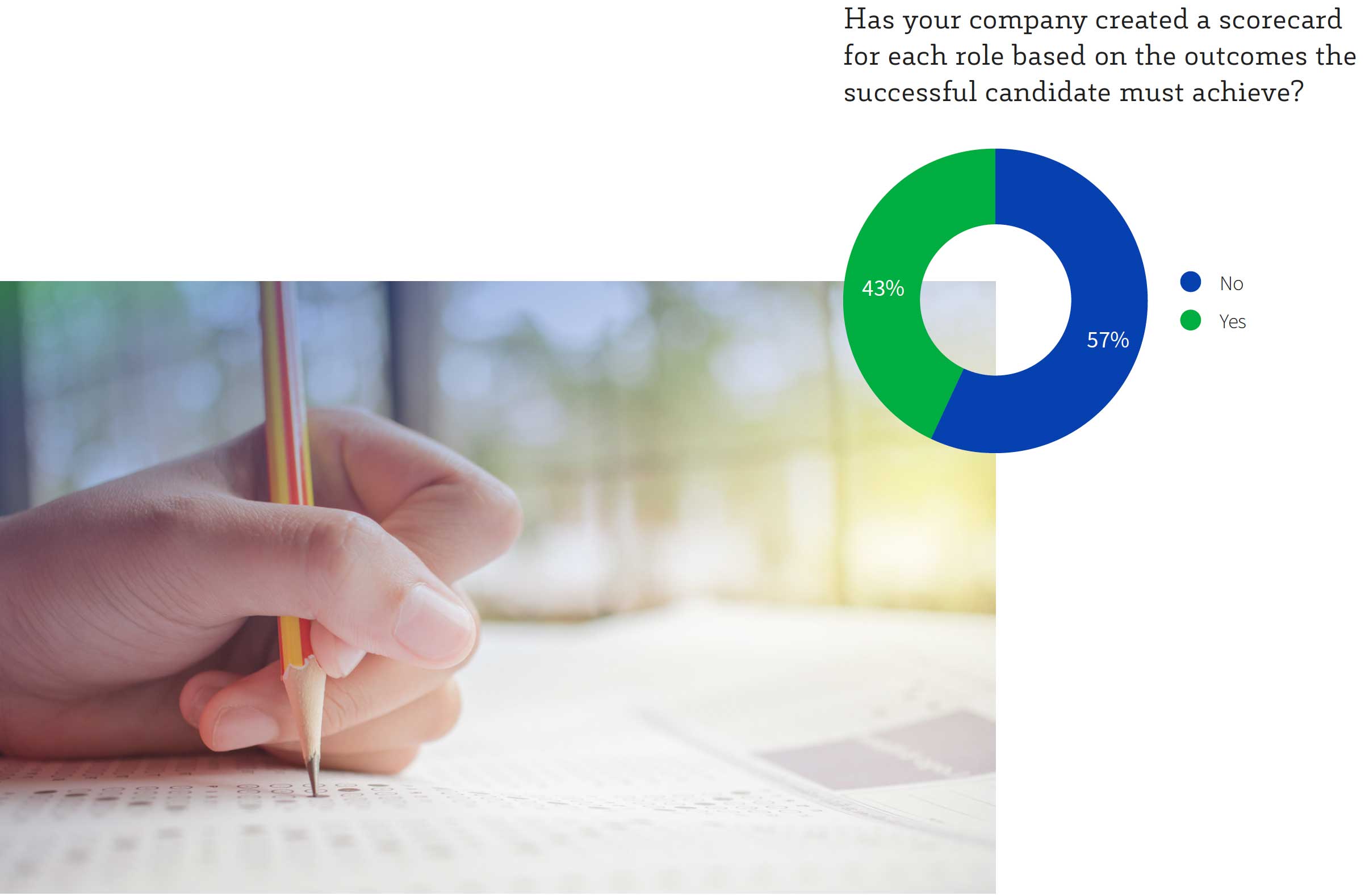
Validated assessments allow you to gather data on a candidate’s performance potential through a structured, collaborative process. And when assessments are implemented in a consistent, transparent way, they force everyone involved in hiring to point to specific criteria to justify their hiring decisions. This minimizes the likelihood of bias creeping into the process.
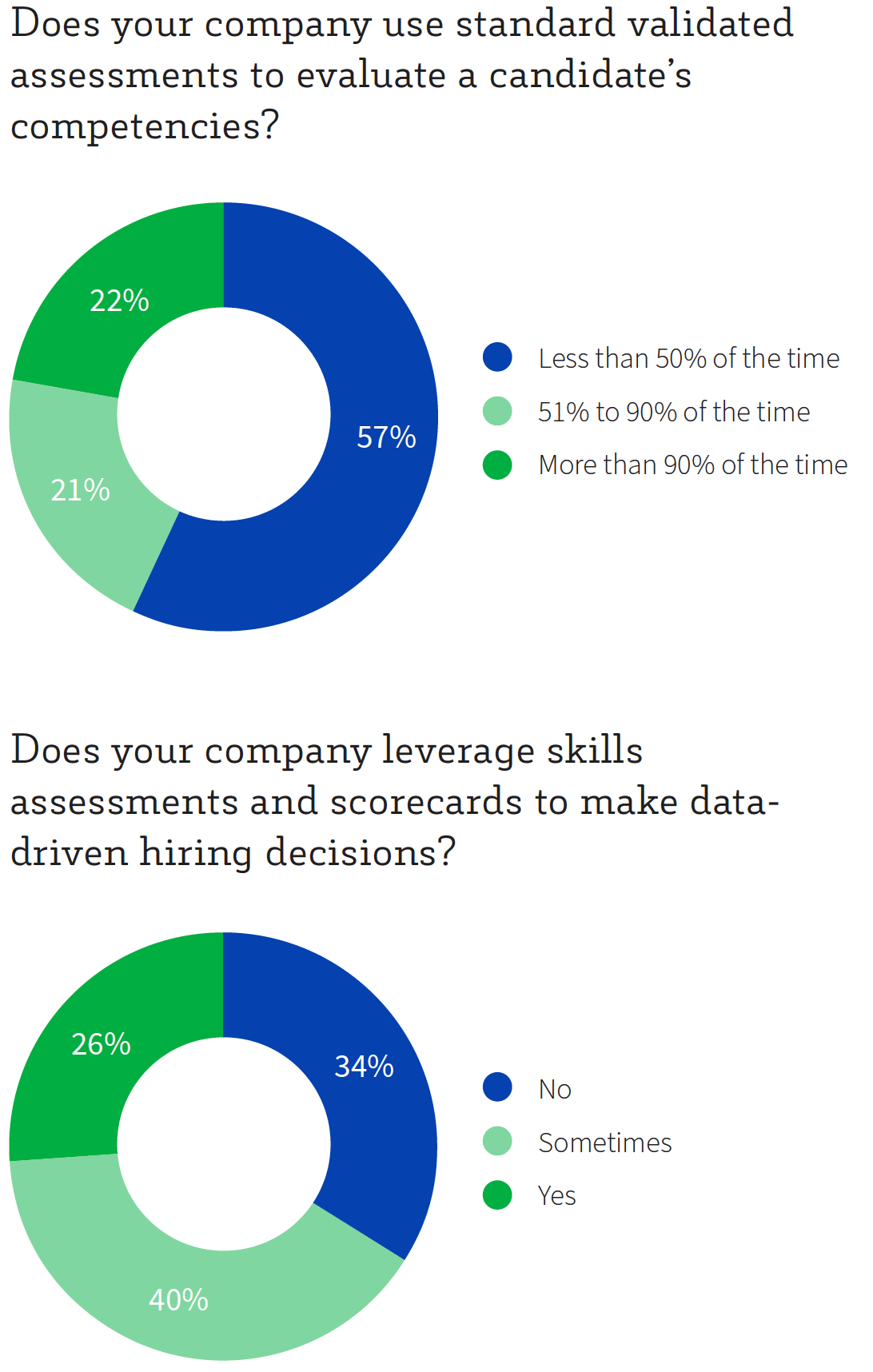
But most companies still aren’t using assessments and scorecards consistently to gain an objective understanding of a candidate’s skills and competencies. More than a third of participants said their companies fail to use assessments, combined with a competency- driven scorecard, to make data-driven hiring decisions. Oftentimes, the gap here emerges in hiring manager engagement in the system. Their buy-in is critical for developing a truly consistent and transparent hiring process throughout the organization.
The SmartRecruiters platform enables that kind of accountability and transparency in the process so that it’s clear how hiring decisions are being made. “Hiring managers, recruiters and the hiring team: they’re all in it together,” says SmartRecruiters Chief Revenue Officer Bob Memmer. “They can all see what’s going on. The scorecards come to life as a result of that structured collaborative process.”

At your company, how often do underrepresented groups participate in the interview process?
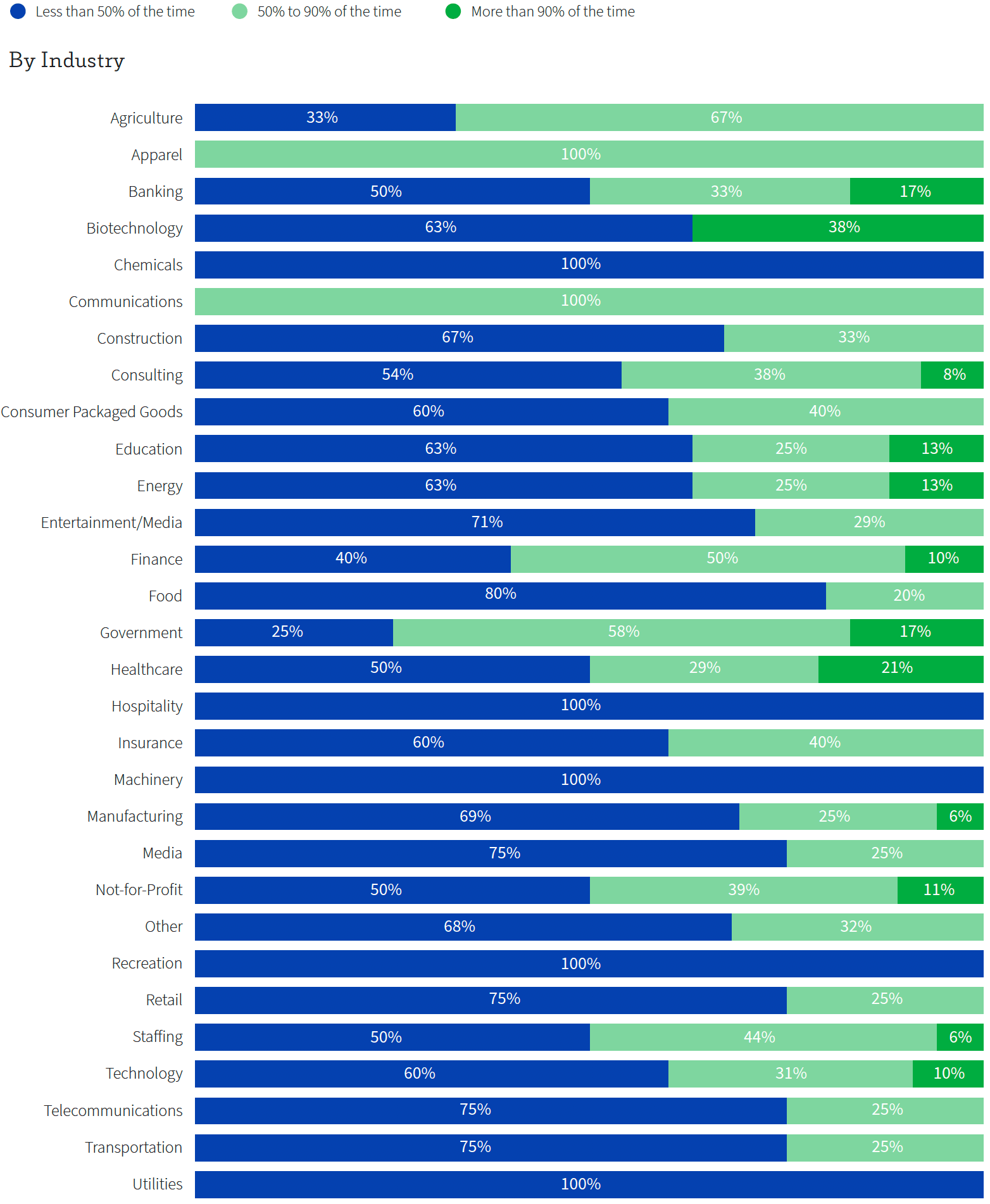
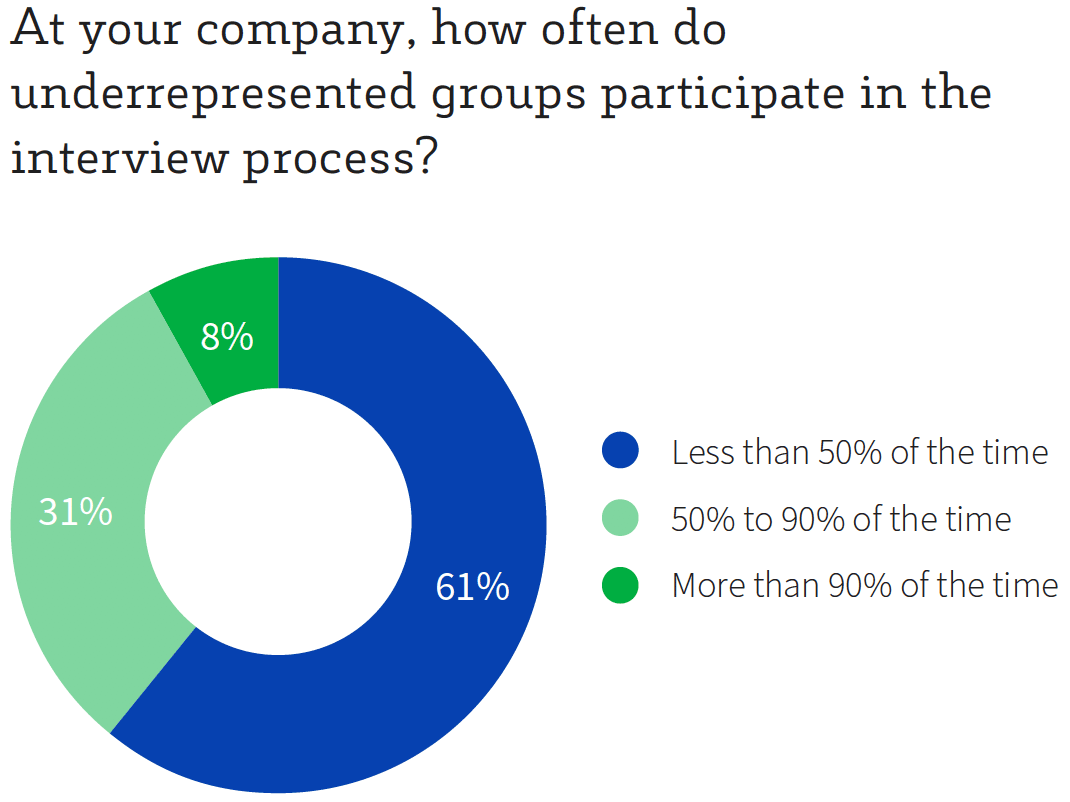
Representation matters at the interview and assessment stage, but many employers are still falling short in this area.
Diverse interview panels put additional checks and balances in place to mitigate the impact of bias. And yet, across industries, participants said their companies ensure underrepresented groups participate in interview panels less than half the time.

Pairing underrepresented candidates with underrepresented team members to help them prepare ahead of an interview improves opportunities for underrepresented candidates to showcase their skills. But only 17% of participants said their companies have begun instituting this best practice.
Although very few industries have established this program (with Banking and Utilities presenting notable exceptions), there’s evidence of progress across industries to provide additional support to underrepresented candidates during the interview process.
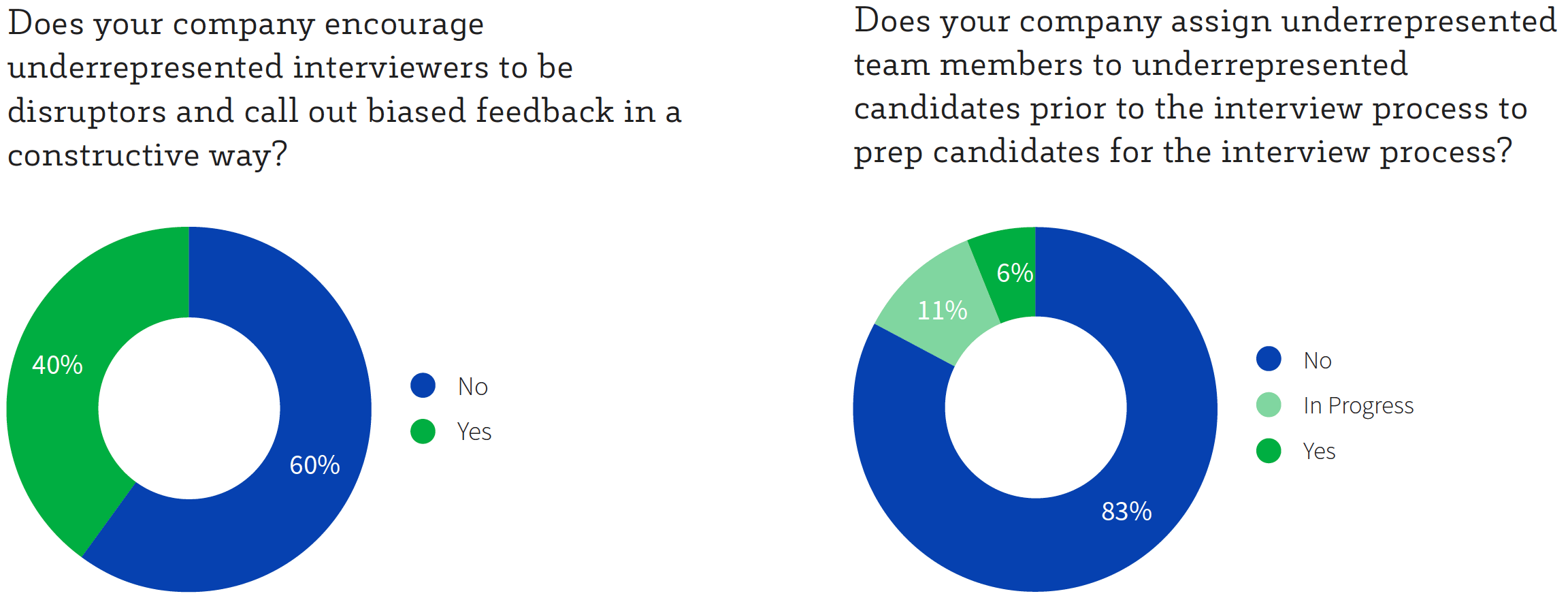
Does your company assign underrepresented team members to underrepresented candidates prior to the interview process to prep candidates for the interview process?
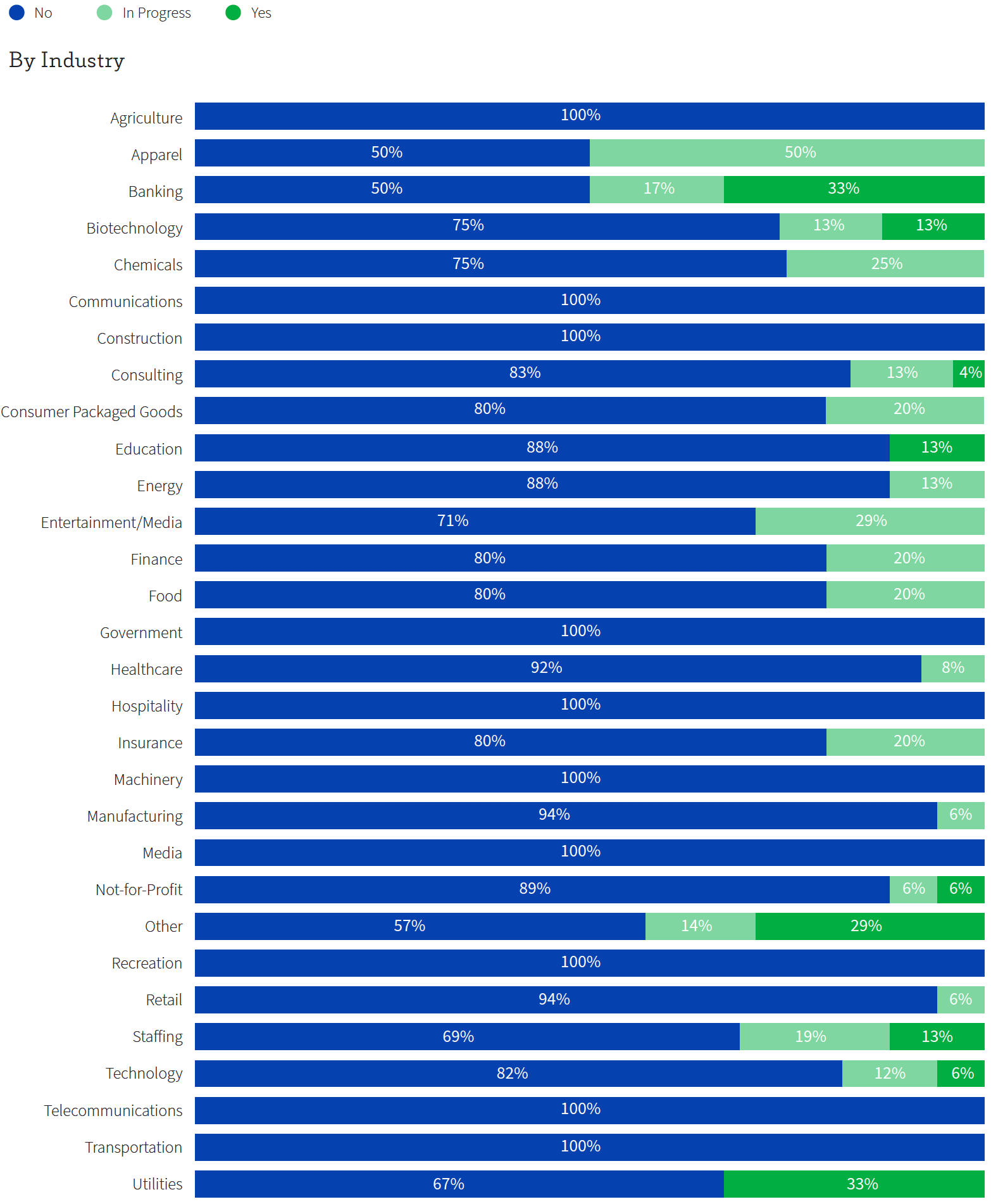
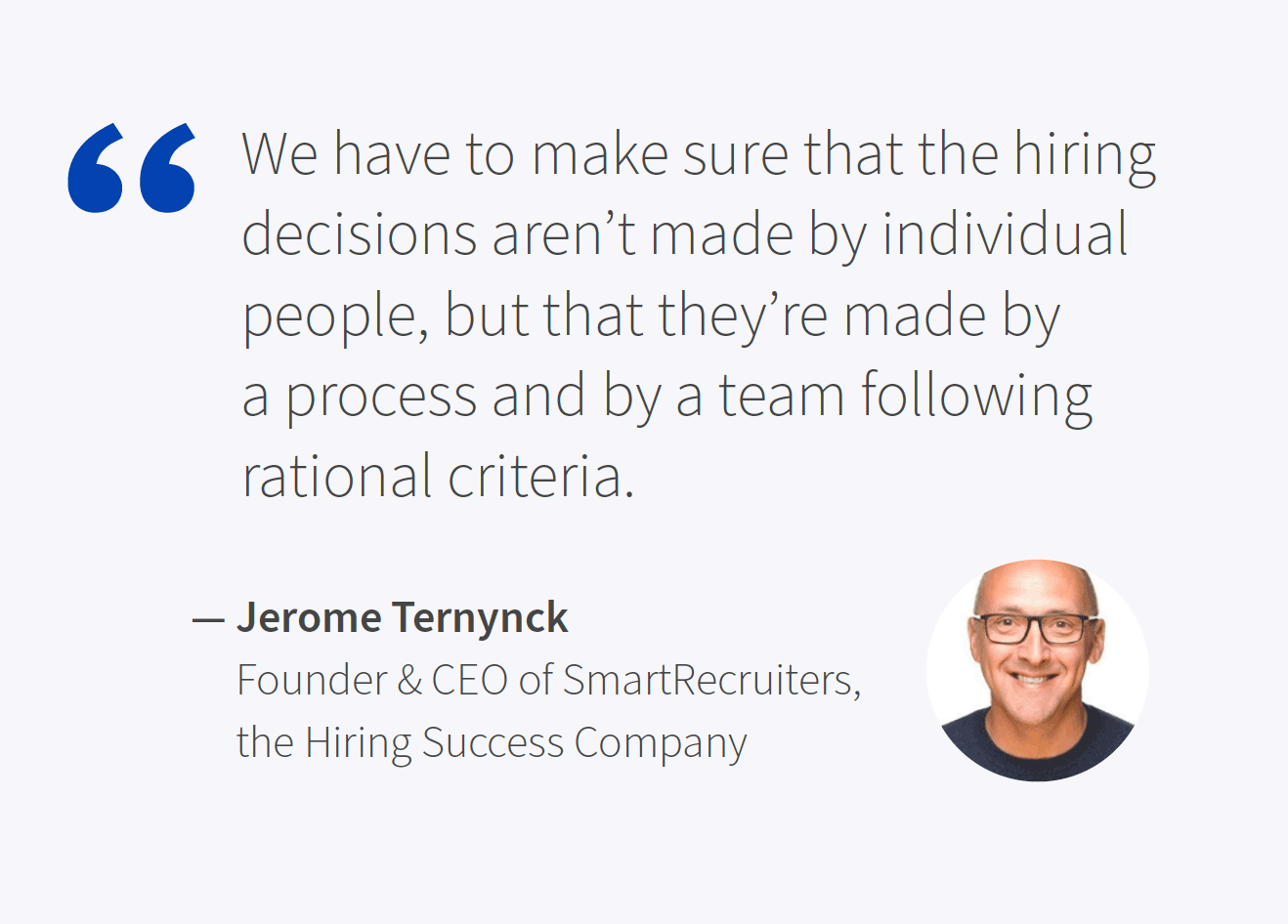
While companies have been making strides to improve objectivity and eliminate bias from the hiring process, there’s still much to be done.
Streamlining job requirements and optimizing them for competencies through validated assessments provide great opportunities for capturing and evaluating objective performance data so you can hire talent that’s the best fit for the role.
Developing Holistic and Inclusive Hiring Processes
As part of her work as Director of People and Performance at Wiser, an employer branding and recruitment agency, CJ Bedford helps the agency’s clients evaluate their diversity and inclusion practices. “If organizations have a reasonably mature recruitment function, then I will ask them to evaluate their processes using the SmartRecruiters toolkit,” Bedford says.
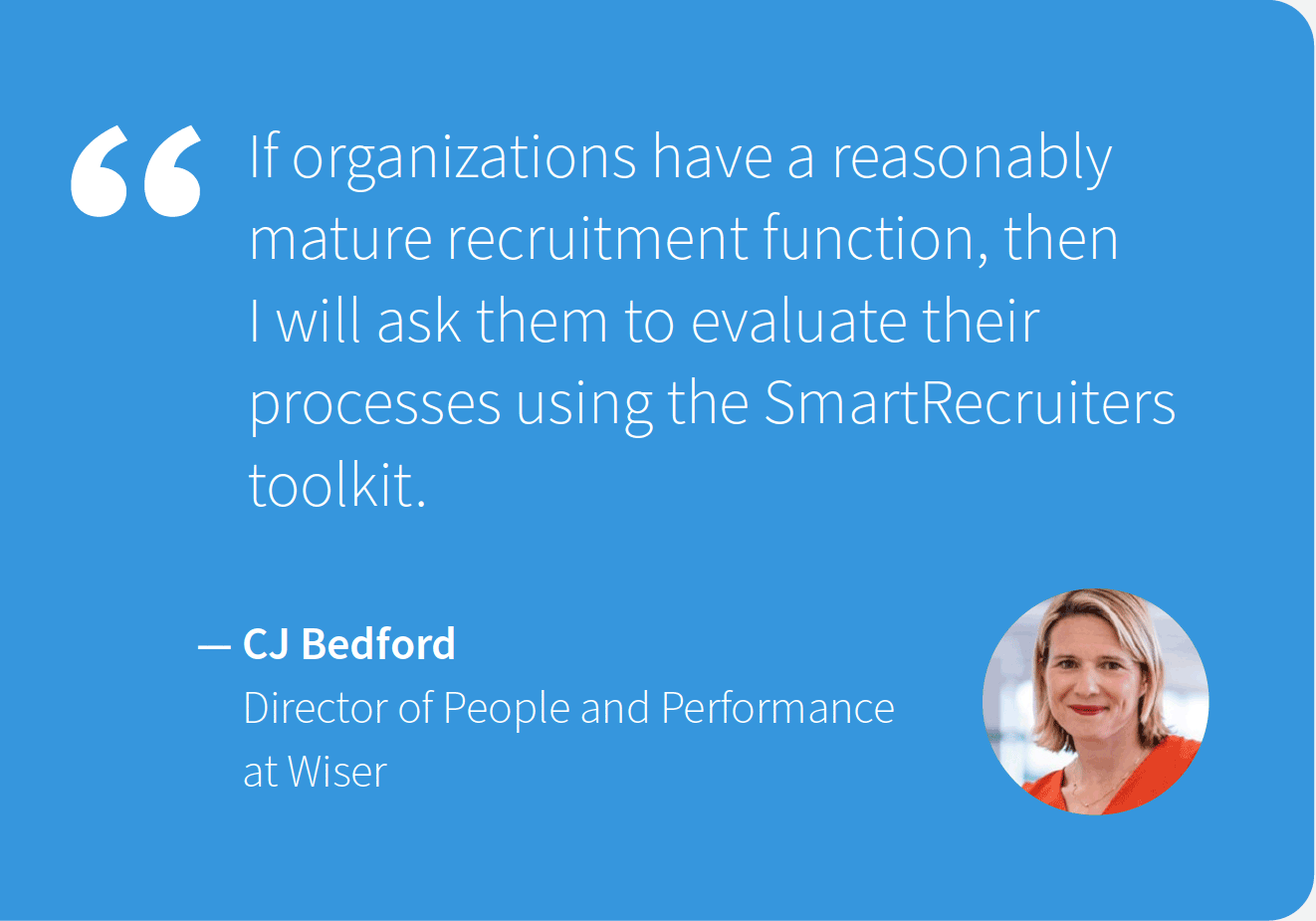
Bedford recommended the Diversity Hiring Toolkit to an international cosmetics firm, which went on to have a conversation with SmartRecruiters about how to make their hiring process less biased and more inclusive. She loves that the tool doesn’t just help identify gaps, but also suggests best practices to move clients to the next level of their D&I journey, such as implementing more diverse interview panels.
She recommends that her clients track where diverse candidates fall out of their hiring process, then focus on specific changes they can make to improve their hiring process, such as implementing interview scorecards or assessments, to minimize bias when reviewing candidates.
As an advocate of holistic change, she is confident that using the platform to bring the philosophy and best practices to life will result in companywide improvement for her clients.
Action Items
Install processes that allow recruiters to review all resumes for relevant qualifications in a bias-free way.
Encourage historically underrepresented interviewers to call out biased feedback in a constructive way.
Vet your interview scorecards and questions with underrepresented minorities who are currently in the role.